The Big Chill: A reminder of William Hurt’s immense but understated power on screen
Lawrence Kasdan’s comedy-drama, about a group of friends who reunite at the funeral of their dead friend Alex, starred the saturnine Hurt, who died earlier this week. It was made 40 years ago this year but, says Geoffrey Macnab, it’s still one of the greatest films about friendship
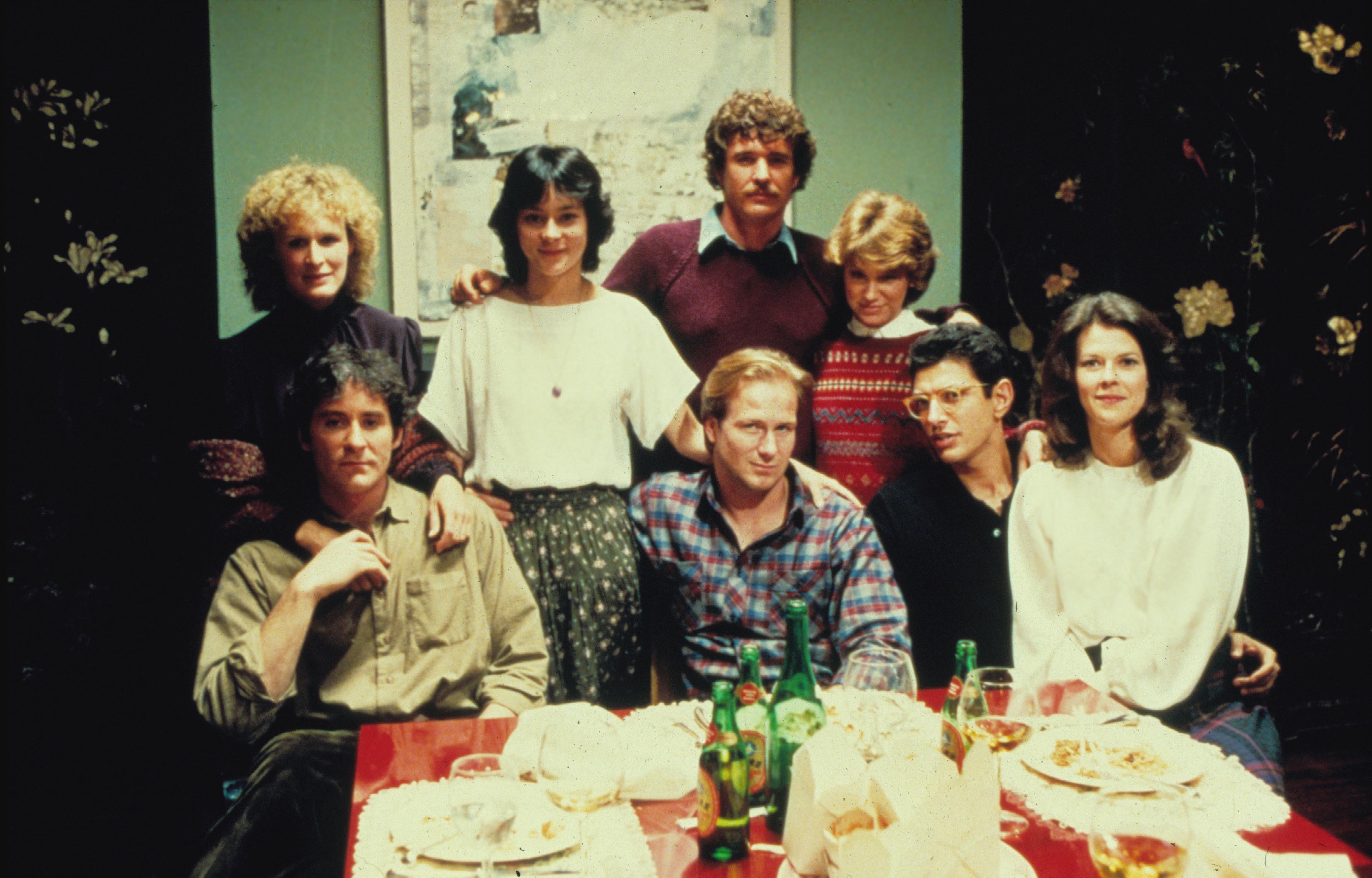
Nick Carlton wears sunglasses, drives a Porsche and smokes an inordinate amount of dope. This is the character played by William Hurt in Lawrence Kasdan’s The Big Chill (1983) – which was shot 40 years ago this year. It’s one of Hurt’s most vivid screen performances, spiky and compelling.
“So you came back from Vietnam a changed man?” Nick asks himself in an interview he records, asking why he has such trouble with “this completion thing” and never finishes anything he starts.
The film reminds us of Hurt’s immense but understated power on screen. The star, who died aged 71 earlier this week, had a chequered private life and was accused of physical abuse by Marlee Matlin, the deaf performer with whom he co-starred in Children of a Lesser God (1986). In his best roles, he had a strange, enigmatic charisma. He could play sardonic, cynical, repressed, or even murderous figures without losing an audience’s sympathy. You can’t help but warm to him in The Big Chill because he cares so little about ingratiating himself with anyone. He takes pleasure in being outspoken and obnoxious but is so obviously suffering himself.
Kasdan’s hugely influential film is about several university friends, now in their thirties, who reunite when one of their group takes his own life. It is the one Kevin Costner movie that not even the star’s fiercest detractors can fault him in. He plays the corpse. He doesn’t say a word in the movie and we don’t see his face. You can tell, though, that if there was one member of the group the others might have expected to die young, it is Hurt’s Nick. Nick is cynical and mixed up. He achieved fame briefly as a radio psychologist (“I had a small… deeply disturbed following”) but is tormented by his experiences in Vietnam. He speaks very openly about his impotence and spends much of his time driving around aimlessly, getting high.
The Big Chill is a paradoxical affair. It touches on the loss of youthful dreams, and yet its young actors – among them, Glenn Close, Jeff Goldblum, Tom Berenger, Kevin Kline, JoBeth Williams, Mary Kay Place, and Hurt – have barely a wrinkle between them. It’s directed and co-scripted by the writer of Raiders of the Lost Ark and several of the Star Wars movies but the closest Kasdan comes to providing an action sequence is when one of the varsity friends Sam (Berenger), who now has a budding career as a TV action star, jumps into an open-top sports car. He is showing off to a cop who watches his show but makes a hash of the stunt.
So why does a film about a group of yuppies in the Eighties, who are mourning an old acquaintance, still cast such a spell today?
In 1973, Kasdan’s friend and collaborator, George Lucas, had made American Graffiti, among the greatest Hollywood coming-of-age films. Its high school protagonists were about to face adulthood and everything it entailed: college, jobs, responsibility, marriage, and, for some, fighting in Vietnam.
It would be stretching it to see The Big Chill as a companion piece to American Graffiti. Lucas’s film was set in Modesto, California, in the early 1960s. Kasdan’s feature takes place 20 years later, in South Carolina. His subjects aren’t youngsters apprehensive about growing up. They’re high-achieving college graduates, boomers from affluent, middle-class backgrounds. Nonetheless, the films are connected. Both deal with formative moments in their characters’ lives. Whereas Lucas is showing teenagers peering forward in trepidation at what their adult lives might have in store, Kasdan’s characters are looking back at what they have already lost. Their idealism has soured. Their ambitions have contracted.
The film starts with a funeral. The friends are grief-stricken and baffled that Alex has taken his own life, seemingly without explanation. As they spend time together, it becomes apparent that they weren’t as close to him as they thought.
Such subject matter may sound grim but The Big Chill has a strong comic undertow. Kasdan shows the friends’ contradictory and often hypocritical behaviour but he never loses his sense of irony. It helps that the actors are so likeable and full of energy.
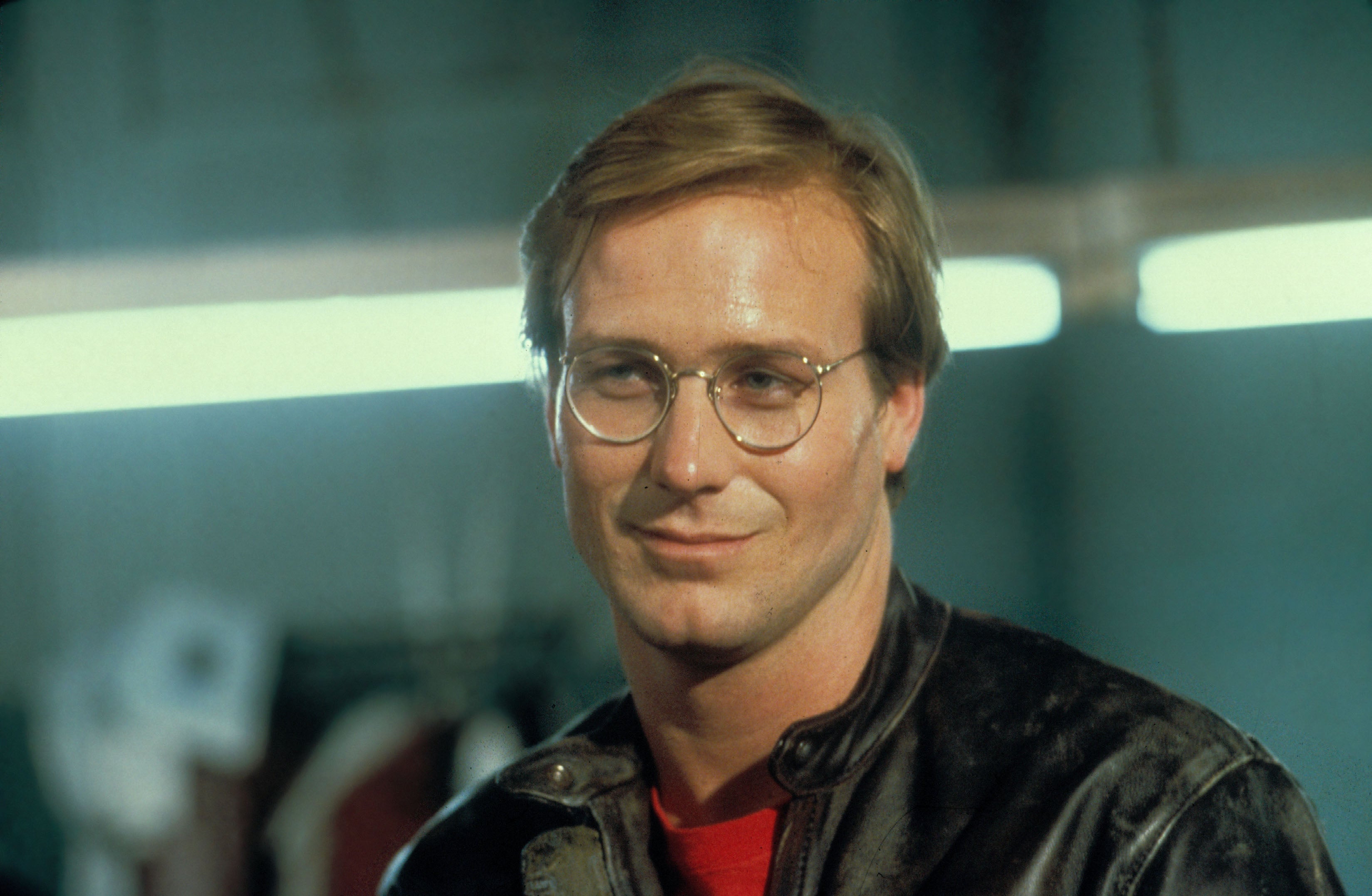
In the church, Michael (Jeff Goldblum), a gangly, opportunistic People magazine journalist, can’t stop himself from hitting on Chloe (Meg Tilly), Alex’s much younger girlfriend who seems strangely unaffected by the death.
The friends are close but tensions simmer between them. Close’s Sarah seems the most level-headed figure in the group, happily married to Harold (Kline). The audience discovers, though, that she once had an affair with Alex. Early on, she is shown crying forlornly in the shower. Sarah is also responsible for the film’s most jarring scene. In what is presented as an act of supreme sacrifice and camaraderie, she encourages her husband to sleep with her friend Meg (Place), who wants to get pregnant.
At first, no studio wanted to go near The Big Chill. The screenplay was considered box office poison. It wasn’t just the subject matter but the structure that worried the Hollywood bosses. “How can you have a movie with seven stars?” the director was asked. His response, that it was like having an all-star basketball team, didn’t reassure them.
“I thought they were crazy,” Kasdan later told interviewer Bobbie Wygant of all the executives who turned the project down. “It seemed to me that if you made a funny film about people’s lives that people would come out to see it.”
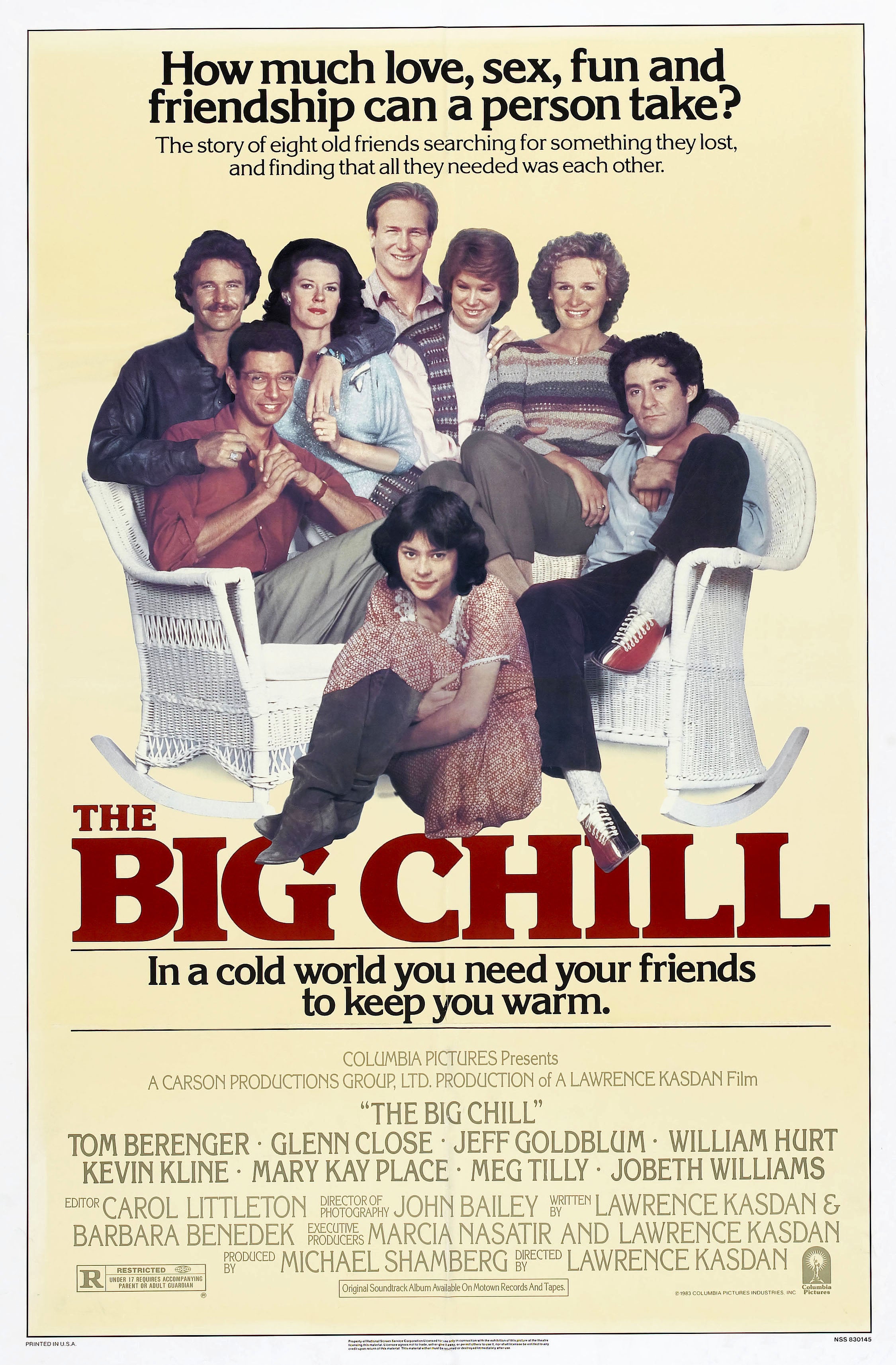
Forty years on, parts of The Big Chill have dated. Contemporary viewers may find the characters’ self-absorbed narcissism hard to stomach. “A group of insufferable Baby Boomers midwife a neoliberal fever-dream about the moral sacrifices that adulthood should entail,” said critic Scott Beauchamp about Kasdan’s movie in a withering 2015 article.
The film is set in a world before mobile phones or social media accounts. At one stage, the journalist Michael complains about readers’ rapidly diminishing attention spans. “Where I work we have only one editorial rule: no writing longer than an average person can read during an average crap. I’m tired of having my work read in the can,” he laments. You can’t help but wonder how he would have coped in a digital age when attention spans have shrunk to nanoseconds.
In certain respects, though, Kasdan was ahead of his time. Long before the creation of YouTube, he includes footage of his characters, notably Hurt’s Nick, filming themselves, talking directly to a video camera in confessional mode. Speaking into the lens, they express themselves far more honestly than when they’re talking with one another.
Kasdan fills The Big Chill with a jukebox-like selection of songs, everything from Marvin Gaye and The Rolling Stones to Aretha Franklin and The Band. The songs were played throughout the extended rehearsal period, which lasted a full month. During this period, the actors, like the characters they were playing, became a very close-knit group. They even spent Thanksgiving together. When they turned up for a 30th-anniversary reunion at the Toronto Festival in 2013, many claimed they were still firm friends. “I could not believe that I was being paid to have that much fun to make a film,” Place reminisced.
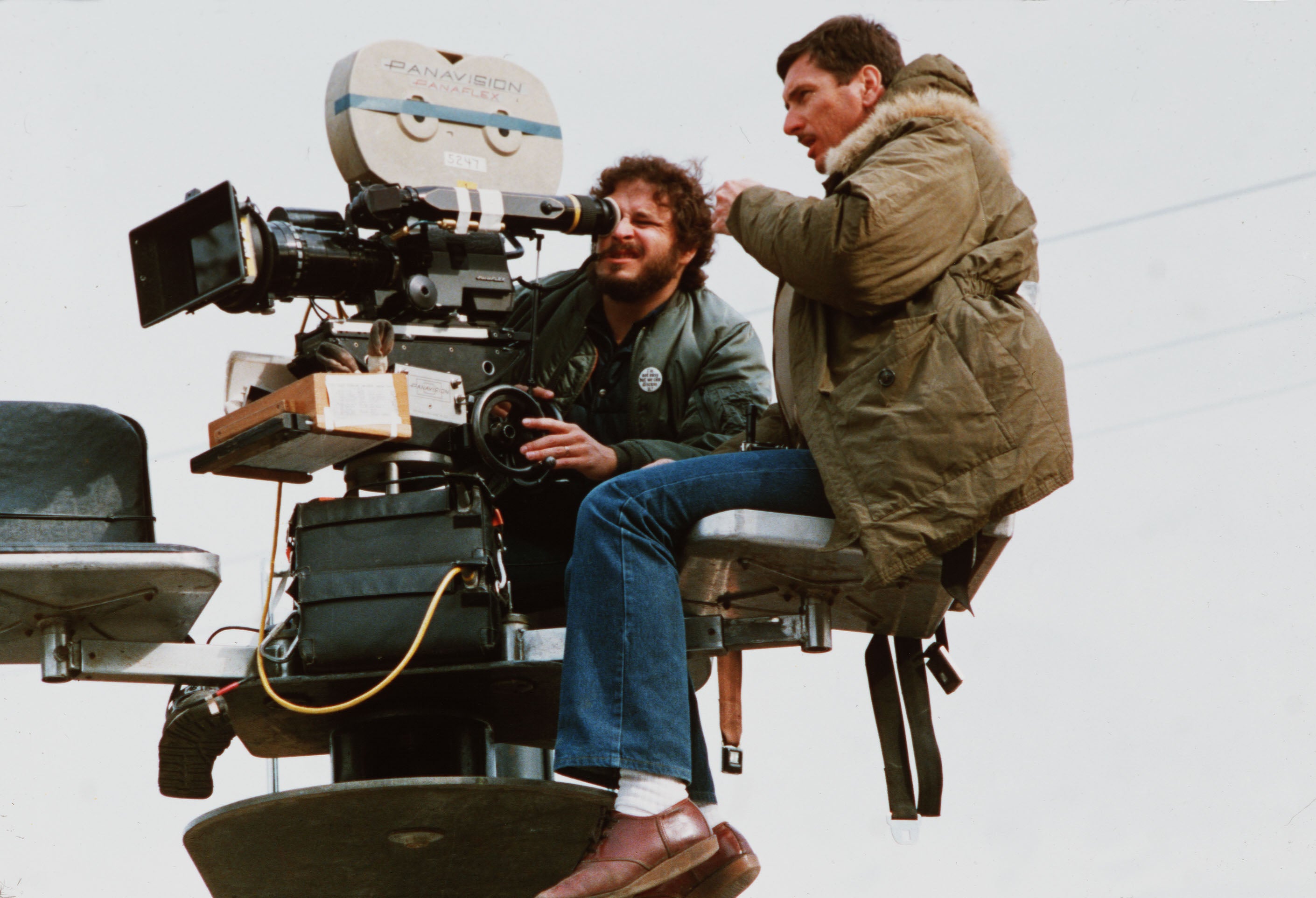
This was a very personal project for Kasdan who co-wrote it with Barbara Benedek. “I wanted to tell a very specific story about people of my generation. I had no thought of how popular it would be or how many people would relate to it,” the director later reflected.
You can still see the lingering influence of The Big Chill today. It directly inspired the US TV series Thritysomething, another ensemble drama about self-absorbed friends from the Baby Boom generation dealing with life in their thirties that aired on ABC from 1987 to 1991. All those other dramas about groups of old friends from Kenneth Branagh’s Peter’s Friends (1992) to British romantic comedy hit Four Weddings and a Funeral (1994) owe Kasdan at least a small debt.
Younger generations have warmed to The Big Chill. Lena Dunham, the creator of HBO’s Girls wrote an eccentric 2014 essay to accompany the Criterion DVD release of The Big Chill in which she observed of the film’s characters in the very first line: “These are your parents.” As Dunham recognised, Kasdan’s idealised view of friendship was deeply alluring to any audience, regardless of age or background. It portrayed a world in which the “men love the men… the women love the women… the men love the women and the women love the men… Everyone could forgive, because sex is just sex but friendship is something greater. Everyone loved everyone just right.”
There are competing ways of looking at The Big Chill. You can take it as an icy and ironic drama about the limitations of friendship. Its characters are so self-absorbed that they are powerless to stop Alex from killing himself. That’s the dark side.
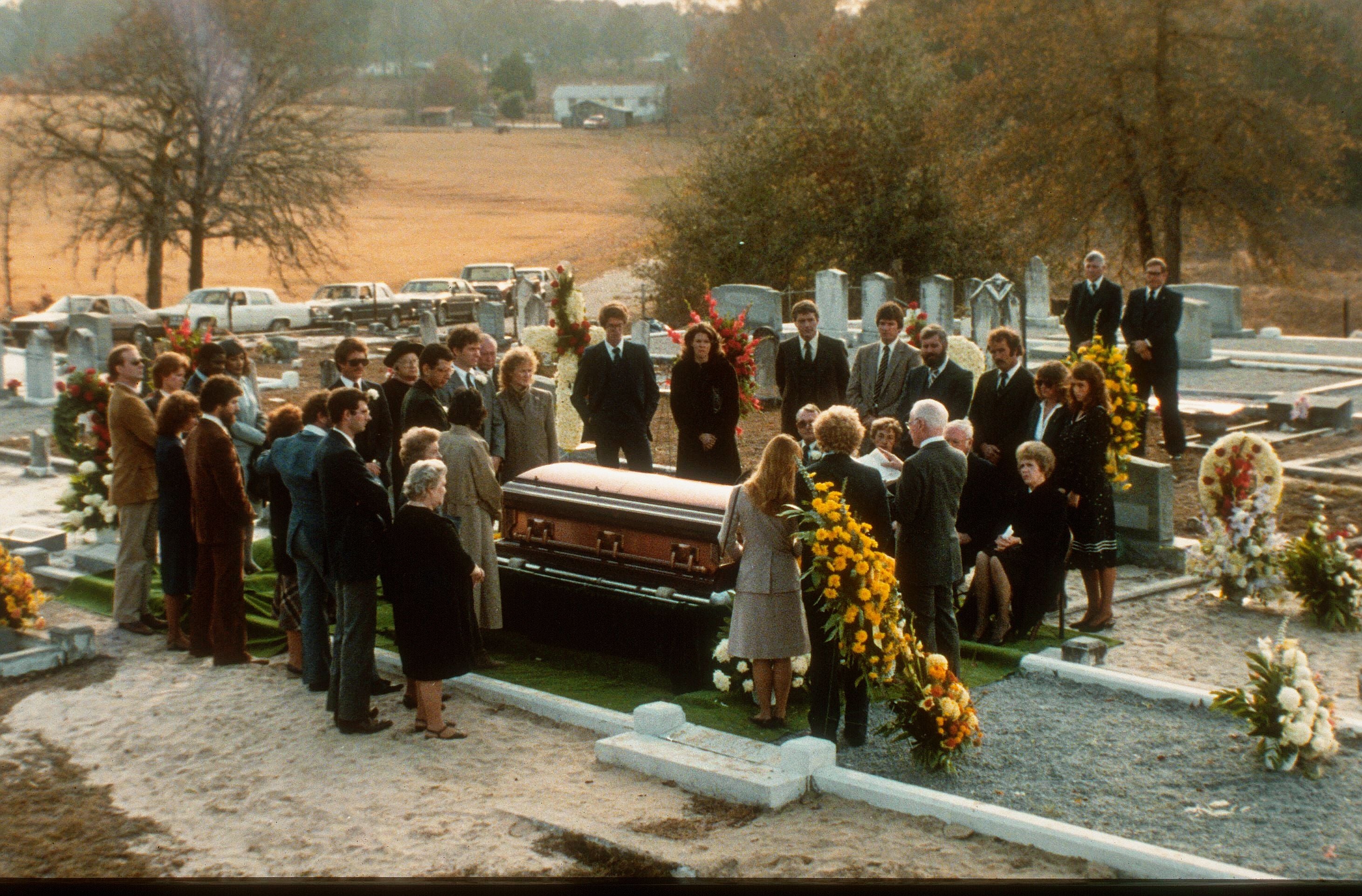
The more optimistic reading is that enduring friendship can help you cope with everything from bereavement and separation to trauma and career disappointment. In the presence of your old pals, you forget the mess and anticlimax of your everyday existence. This was the spin Kasdan gave his film when he edited out the flashback in which Alex featured, leaving the unfortunate Costner on the cutting room floor. He concentrated on the living instead, thereby turning a film could that have been downbeat in the extreme into the uplifting crowdpleaser that audiences still savour today. It helped too, of course, that he had the saturnine Hurt, with whom he had already worked on Body Heat (1981). They’d go on to make two further films together, The Accidental Tourist (1988) and I Love You to Death (1990).
“That was the one part I knew who would play it,” Kasdan later said of Hurt’s role in The Big Chill. “He’s a wonderful actor, very powerful. It was the only part in the movie where I knew ahead of time I wanted to use a certain actor.”
‘The Big Chill’ is available on Amazon Prime






Join our commenting forum
Join thought-provoking conversations, follow other Independent readers and see their replies
1Comments